Down in the woods: A Raglan cabin houses handmade artisanal talent
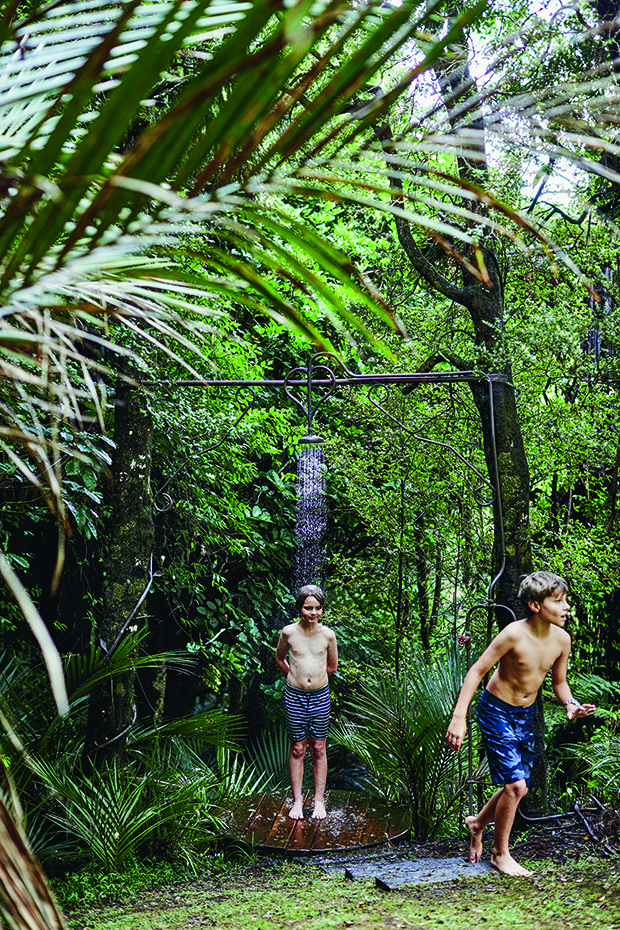
The shower in the trees outside the cabin’s front door, designed by artistically minded local plumber Grant Mathis, is highly rated by guests and family, including Flynn (9) and Rion (11).
A family used to living in far-flung countries has now returned to this 40-hectare Raglan lifestyle block, where their entrepreneurial natures have free reign.
Words: Sarah Templeton Photos: Brent Darby
Past a dime-a-dozen Wilsons Rural blue-and-gold letterbox, an unassuming driveway off a lengthy Raglan road leads to a talent hub.
A large, corrugated iron building awaits those who rattle and roll up the drive past the farmhouse. A shed is not unusual in this neck of the woods, but this one is. Curiously, it’s packed with woven handbags. Jewel toned and artfully finished, they line the walls and huddle together on the concrete floor.
Interest sparked, one might mosey up the farm track to pass a field of bemused dairy cows into an explosion of native bush: rimu, sky-high kahikatea, the occasional mātai, tōtara and lush green pūriri. Then, after leaving their vehicle behind, they’d find a timber cabin hidden in the trees.
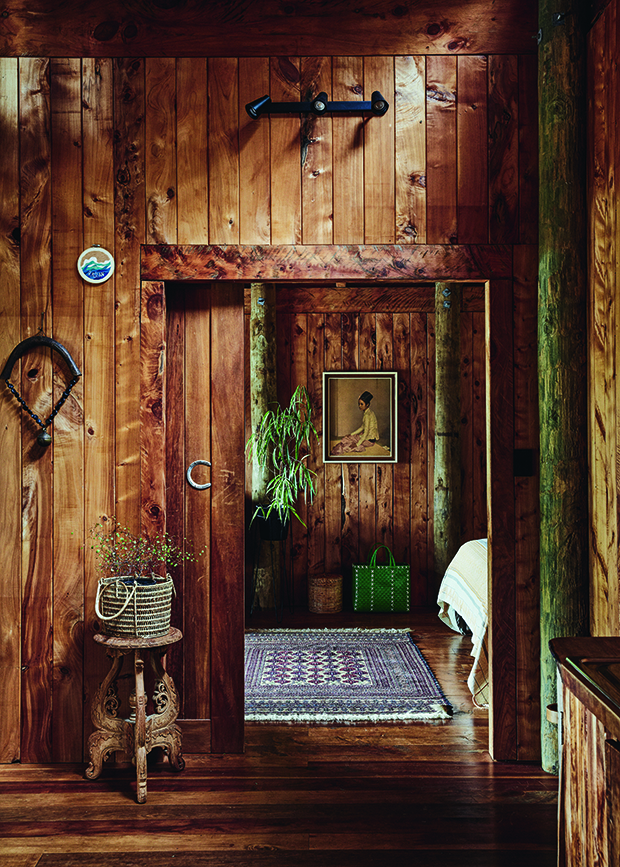
A downstairs bedroom off the cabin’s living room was added after former owners Alan and Donna Gibbison won $20,000 on a scratchie ticket.
Landowners Nicola and Kent Todd have their gumboots planted firmly in all of the above. With sons Rion (11) and Flynn (9), they care for this 40-hectare Te Mata block, which houses a secluded cabin, a small dairy herd, the headquarters of Raglan Tiny Homes and Nicola’s baby, Zay.
Zay is why stacks of colourful basket bags fill the shed. It’s uncharacteristic for farms to have a handbag-store-come-showroom on the property — but perhaps not in this part of Aotearoa. “Raglan is such an entrepreneurial place,” says Nicola.
“People work on amazing things in their sheds. My best friend is a beekeeper; there are people making skin creams, florists, photographers, gelato-makers… there are all sorts.”
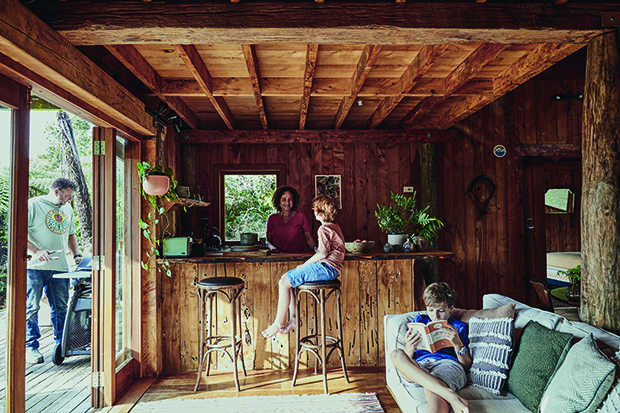
The kitchen benchtop is cut from a large slab of native timber. The bar is made from pūriri wood sourced from the farm, with holes courtesy of the pūriri moth caterpillar, Aotearoa’s largest moth, with a wingspan of 10 to 15 centimetres.
Nicola has a radar for artisanal talent, an eye that served her well when the family lived overseas. Kent, a dairy farmer who now works for DairyNZ, was part of the Myanmar Dairy Excellence Project, and the family spent almost three years in the hot and colourful city of Mandalay.
“That’s how I got into the bags; you use them in the fruit shops over there. And I’d be like, who is making these? And it turned out it was women in their homes in between their domestic duties.”
Nicola stuffed books, water bottles, sunscreen, yoga mats, and snacks for the children in her own bag. It was a surprise to locals — and to Nicola herself — that she saw retail potential.
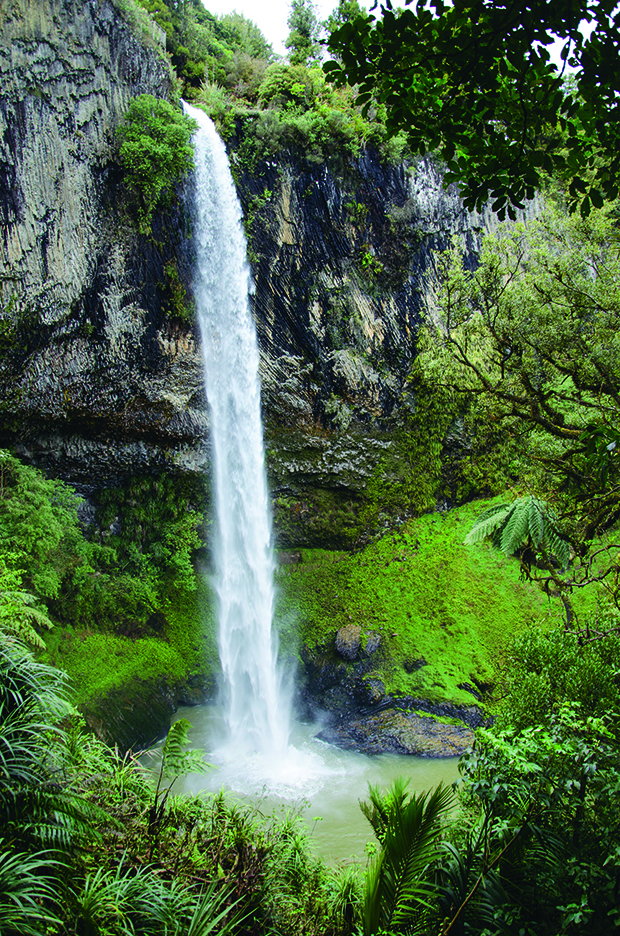
The popular Waireinga/Bridal Veil Falls are on Kawhia Road, only a 10-minute drive away.
“I’m impulsive. I had no experience in retail. It was completely new. It’s probably a good thing. I don’t think I would have done it if I’d known what would be involved.”
She had a vision. With the help of a local translator, she visited the homes of local weavers to learn about their techniques and ways of combining colours. The business burst into multi-hued existence, finding and paying talented local weavers a fair wage and sustainable income. Nicola started selling the bags in New Zealand markets.
These days, thanks to the assistance of WhatsApp and communicative patience on both sides, the bag business Zay is run from Nicola’s farm shed and two adjoining shipping containers to catch the overflow. Bags are bursting out the doors.
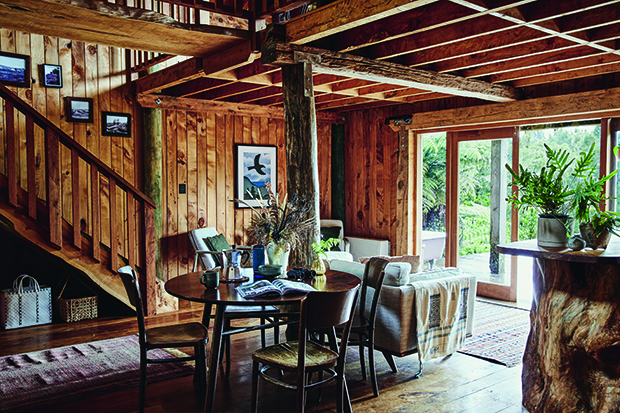
The Gibbisons’ gorgeously unsubtle love of timber is evident throughout, including the staircase, shelving and the headboard above the bed on the mezzanine.
Thankfully, she shares the large shed with the helpful people at Raglan Tiny Homes. They’re dutifully called on to build an apologetic Nicola more shelves every time a new shipping container is panic-ordered online.
Zay sees Nicola through her days, which is good as she never much fancied a farming role. As they approached their return to Aotearoa from Myanmar in 2017, Kent toyed with the idea of going back to dairy farming. But the couple was all too aware that life on the plot of land they could afford would be “brutal”.
“When you can’t afford a decent plot, you end up battling the elements,” says Nicola. “We ended up thinking we need to be in the Waikato — it’s reasonably close to both our families, and there are plenty of other jobs for Kent’s type of work.”
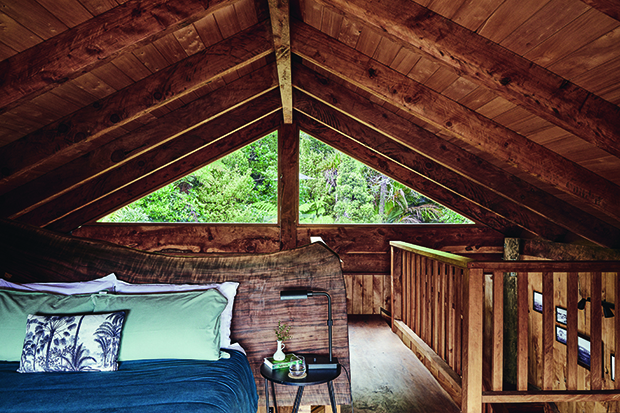
A compromise was in the form of a lifestyle block, spotted by a friend in 2017. Kent was set on some grazing cows, and the pair settled on a spot easy to reach by grandparents and family based in Papakura and Tokoroa. “And when I saw the shed, I thought, ‘I can store my bags there,’” says Nicola.
It wasn’t a straightforward move. The block had been the home and working place of locals Alan and Donna Gibbison for nearly 20 years. Alan, a logger, had stored and treated timber in the large shed on the property.
Kent and Nicola paid several visits to the property when they came home from Myanmar. From Mandalay they negotiated the purchase, and owned it a year before officially moving in. Even then, Kent had to spend time shuttling back and forth to the South-East Asian province.
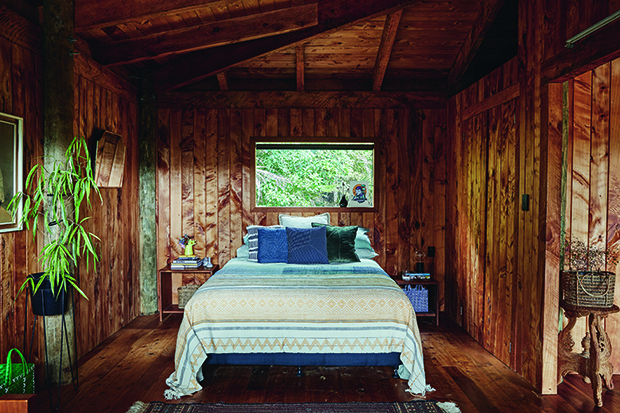
Luxe touches, including toiletries, magazines and everything needed to make a good cuppa, are included for guests to use. Those behind on their NZ Life & Leisure reading will find several copies waiting.
Diversification was needed to help the farm pay for itself. The paddocks went to the dairy farmer next door who needed more room for his stock. The largest section of the shed went to Raglan Tiny Homes owners Chris Morrison and Eva Macfarlane, who Kent and Nicola met locally.
Land size and viability aside, it was “Gibbo’s Cabin” — well known in the area for parties and gatherings for decades — which cemented the block’s purchase.
The cabin was built in a far-flung corner by Alan and a woodworking friend in 2003, using timber he’d had felled, milled and dressed in the shed just up the track. It became a beloved local party barn and bar with some of the best views in the district.
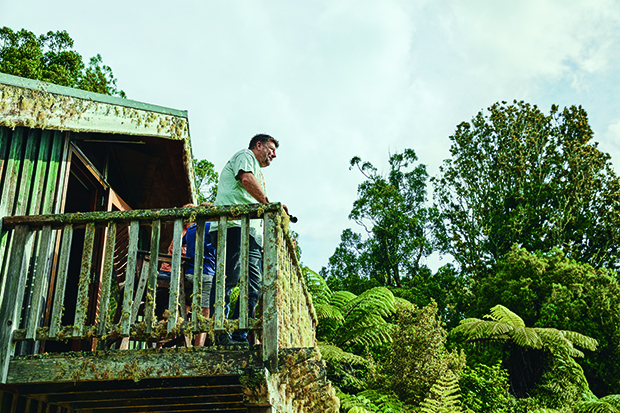
Kent surveys the surrounding rolling hills and farmland.
On their first visit, Nicola and Kent were won over by the scent of macrocarpa that wallops every visitor in the face as they walk through the door. Almost two decades on, the smell remained as strong as Nicola’s resolve. This elegantly crafted cabin deep in the bush was another potential project.
In 2018, agri-tourism was only just taking off. The couple feared the cabin would be too secluded and far from the town to appeal to travellers. Would people even want to stay?
“But I knew that friends and family would come, and I wanted to be able to stay up there myself — and I do,” says Nicola.
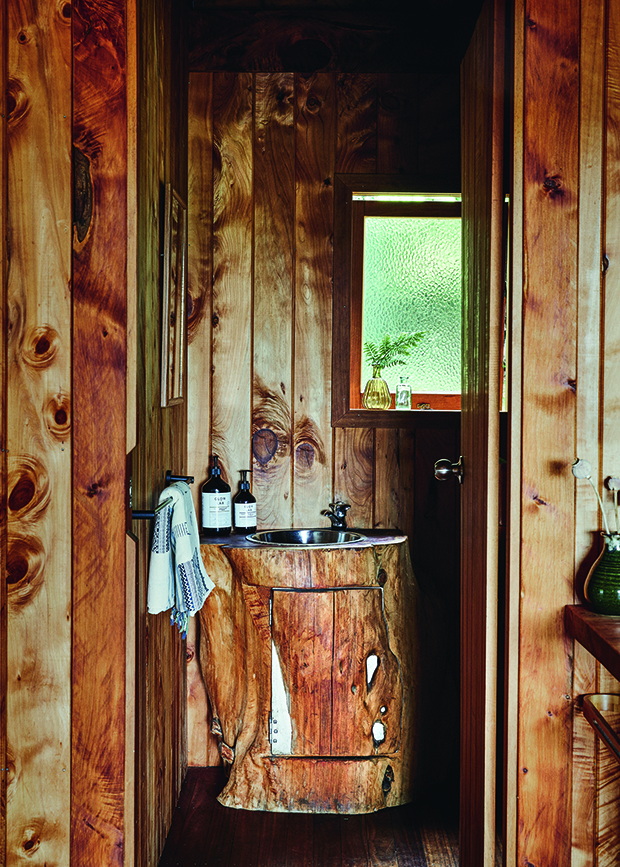
A standout feature is the bathroom’s macrocarpa vanity, carved by Alan with a chainsaw.
Getting the cabin guest-ready took more than a year and more work than Nicola and Kent could have imagined. It was powered off-grid using solar. Hot water is plumbed through the bush for the shower and an outdoor bath, an addition Nicola says was a nightmare to install.
“I bought this bath for something like $300, and I was calling my husband saying, ‘You need to pick me up a bath,’ and he was saying, ‘What for?’”
Nicola had grand plans for building a dedicated platform in the bush, but after the pair managed to stagger the 30-kilogramme bath through the mud and bush and heave it onto the deck, Kent put his foot down. On the deck, it stayed.
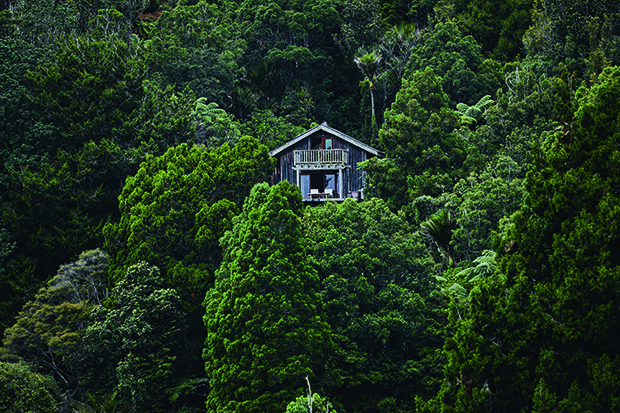
Akatea Hill can be found on Airbnb. But future stayers should take note that the journey to get to the cabin through the farm can be challenging. Nicola says she likes that it’s a little hard to find. “I like to keep it random with no signs on the road. People must think, ‘Where the hell are we going?’”
They renamed the cabin Akatea Hill for the white rata covering the palms, ferns and trees around it, including the lone nīkau beside the back door.
Inside, Nicola’s eye for artisan crafts is clear. Chairs once owned by the Gibbisons cleaned up nicely. Feet are protected from chilly hardwood floors by handwoven rugs purchased during another of Kent’s dairy-
project stints.
“We lived in Pakistan for two years, and I bought all these rugs, so I was so happy I could put them somewhere,” says Nicola.
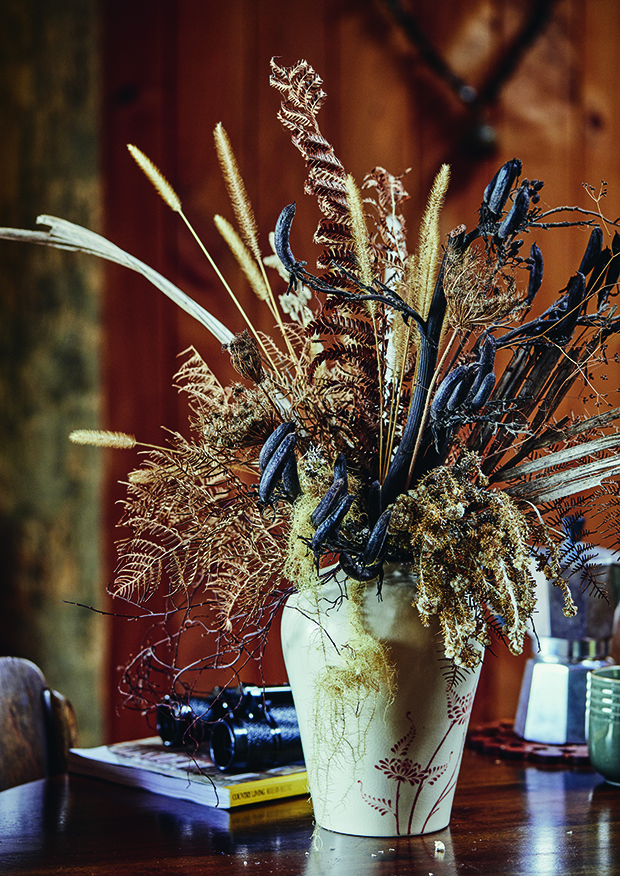
“And they’re all authentic. I bought them from this lovely man I would visit with friends in the backstreets of the old town. While we sat drinking tea, he’d show us his rugs.”
Nicola left laden with fabrics after each visit. “It was a nightmare. I didn’t have much money back then, but I couldn’t help it. I just kept buying these blimmin’ carpets for ‘one day’.”
Her favourite spot is the outdoor shower, built by a local plumber. While Kent would have been happy with a tap for visitors to wash the region’s characteristic black sand off their feet, Nicola had grander visions.
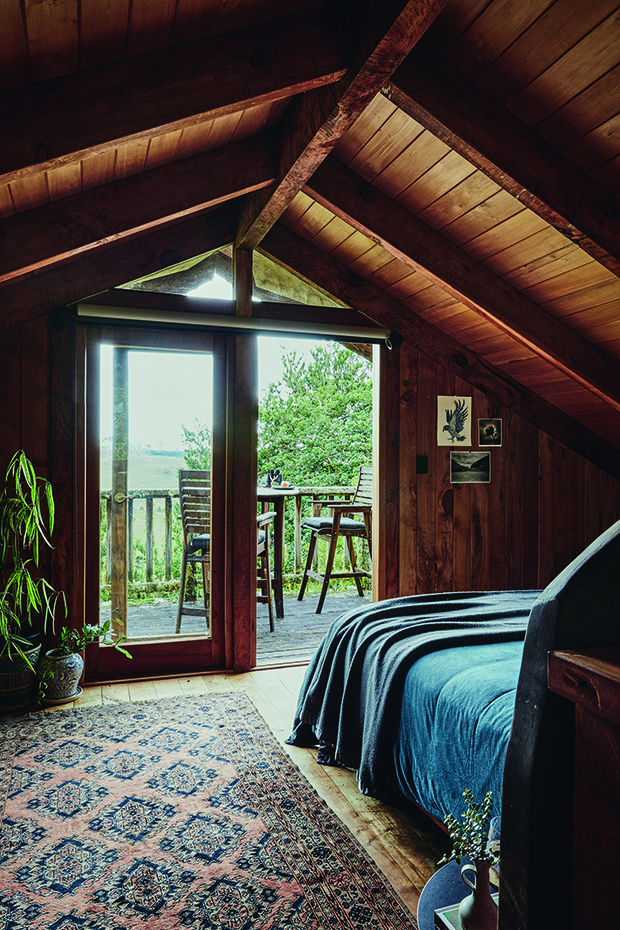
International adventures are key to Nicola and Kent’s love story: the pair met while working for Contiki. Kent was a bus driver, and Nicola a tour guide. Treasures picked up on their travels — including handwoven rugs from Pakistan — can be spotted inside and out.
“I said we needed a stunning outdoor shower in the bush. My husband and I were up there with a plumber, and I told him, ‘I’ve looked on Pinterest and here’s what I’m thinking.’ [Kent] was yelling, ‘Don’t look at Pinterest — look in Bunnings!’”
But the plumber, an artistically minded type, promised it wouldn’t take too much more effort. “I was so busy I didn’t actually even get to send him any pictures. I just said I wanted something beautiful to go with the cabin. He said ‘okay’ and made me the most beautiful shower. It’s the best thing I’ve ever bought.”
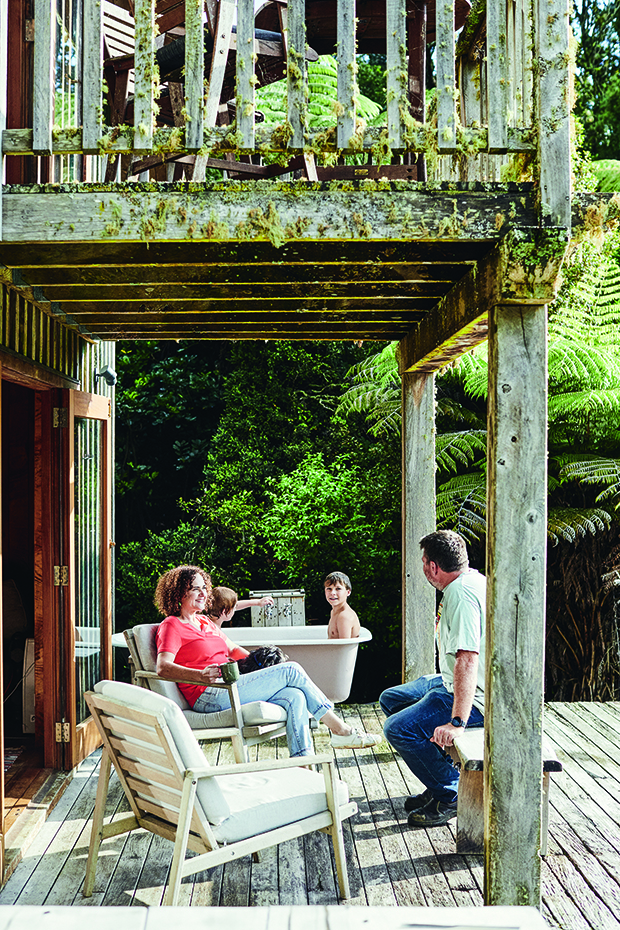
The 30-kilogramme bath was carried through the mud and bush and heaved onto the deck, where it has stayed. Milo the pup watches the fun from Nicola’s lap.
The years of hard work have paid off. Akatea Hill has a series of glowing reviews from travellers and tourists who have found the cabin an escape from city life.
Even in winter, business doesn’t slow. “The cool thing about the cabin is even if it’s raining hard, you can spread out. I hate cleaning my own house, but I don’t mind doing it up there. There’s something about the cabin. It forces me to slow down.”
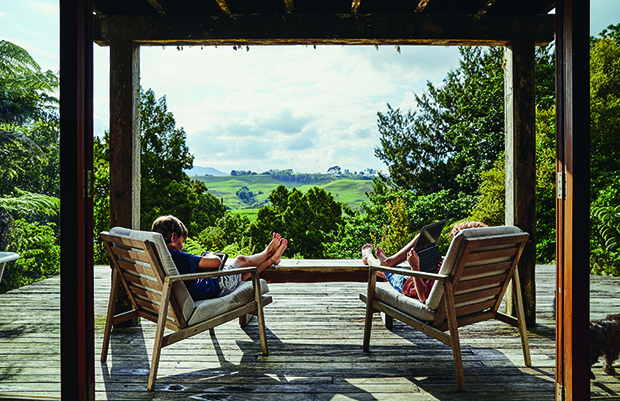
The area resounds with local birdlife, which Nicola says is a recent addition. “We’ve removed more than 200 possums, and we think it’s really improved the birdlife — now we can see fantails, tūī, kererū… We spotted a morepork recently.”
The family even attempted to live in the cabin for a two-week stint one winter. It might, Nicola says, have been a little ambitious. “I want to live there eventually — but we tried living there in the winter, and it wasn’t quite ready for that. I could see why my husband was a little reluctant. I could do it. But maybe when we retire.”
MAINTAINING A BUSINESS ACROSS OCEANS
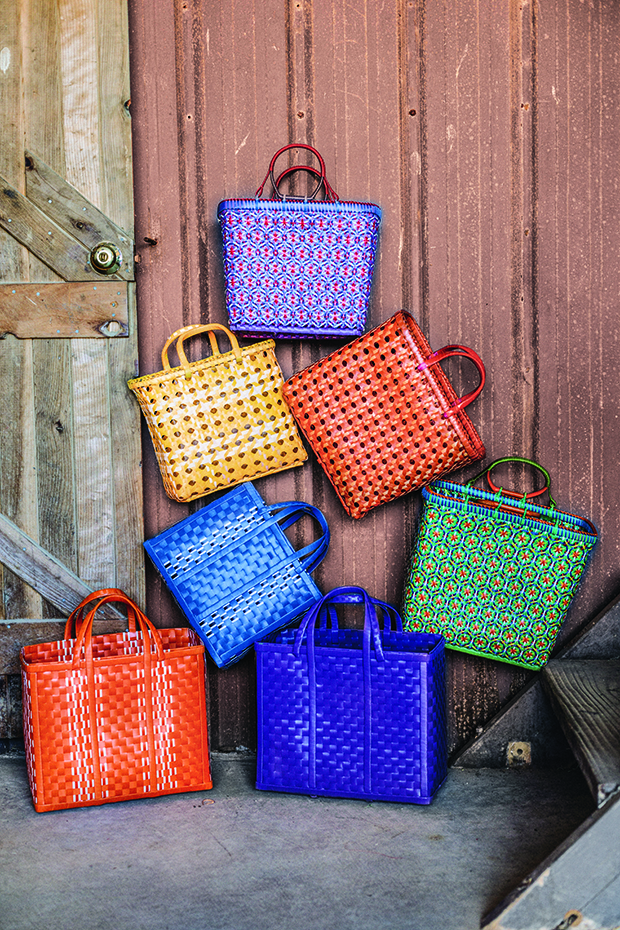
Starting a business takes work at the best of times. Throw in language barriers and supply-chain difficulties, and many would put it in the “too hard” basket — pun intended. But Nicola had fallen in love with the colourful and durable zay chin (market baskets) that local women carried at the markets in Mandalay, often approaching them to find out the bags’ makers. Then, on the back of a friend’s motorbike, she travelled long distances to hunt them down.
Zay’s leading weaver is San San Moe, who Nicola approached after seeing baskets attached to her fence. Building up a relationship of trust wasn’t easy. “It took a long time, and it takes consistency. Because I was living there, I could visit weekly and pay as I went. The problem now is I’ve paid for so many bags, they keep sending them!” San San Moe’s three sisters and adult daughter now weave for Zay. The bags come in three styles: Willow, Juno and Sol. When they arrive in Raglan, Nicola and her colleague Katie go over them with a fine-tooth comb, fixing up any imperfections and getting them ready for the stockists around the country.
While neutral shades are currently in fashion, come summer, Nicola knows bright yellow, hot pink and vibrant orange will again start flying off the shelves. “I want Zay to be bright and colourful; I want it to be like sunshine. I want people to go for colours they might not usually go for. I love that there’s a colour for everyone.” zaybags.co.nz
Love this story? Subscribe now!
 This article first appeared in NZ Life & Leisure Magazine.
This article first appeared in NZ Life & Leisure Magazine.
